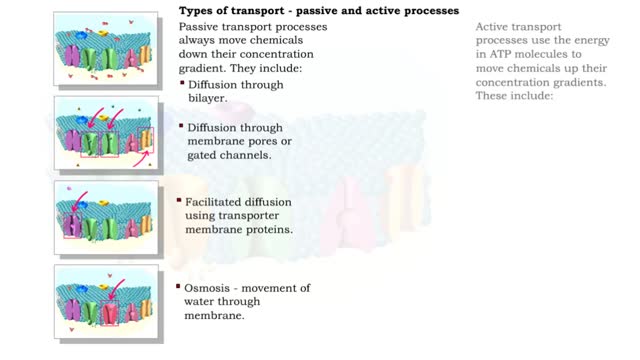Membrane Protein and Facilitated Transport (Passive Vs Active)
By: HWC
Date Uploaded: 04/22/2020
Tags: homeworkclinic.com Homework Clinic HWC Membrane proteins Integral membrane proteins hydrophobic amino acids lipid bilayer hydrophilic amino acids glycoproteins polysaccharide Passive transporters Facilitated Transport active transport passive transport
Membrane proteins are common proteins that are part of, or interact with, biological membranes. Membrane proteins fall into several broad categories depending on their location. Integral membrane proteins span the membrane, with hydrophobic amino acids interacting with the lipid bilayer and hydrophilic amino acids exposed to the aqueous environment on each side of that membrane. Many integral membrane proteins are glycoproteins, bearing covalently linked carbohydrate (polysaccharide— side chains on their extracellular domain). Biological membranes often have non-equilibrium concentrations of a compound on each side of the bilayer. Passive transporters: • accelerate diffusion • equilibrium reached more rapidly • only dissipate concentration gradients • no free energy required Equal concentrations = equilibrium reached. This difference is that active transport needs energy, while facilitated diffusion does not need energy. The energy that active transport uses is ATP (adenosine triphosphate). Energy is needed in this form of transport because the substances are going against the concentration gradient.
Add To
You must login to add videos to your playlists.
Advertisement












Comments
0 Comments total
Sign In to post comments.
No comments have been posted for this video yet.